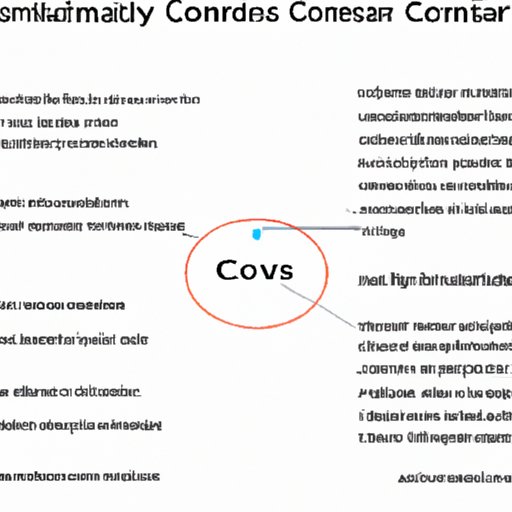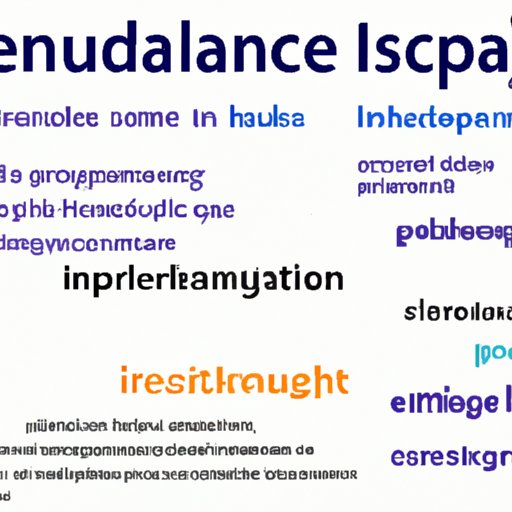Introduction
When it comes to understanding different cultures, the concept of “high context” is often used to describe societies that rely heavily on non-verbal communication, subtle cues, and unspoken rules. In a high context culture, the underlying assumptions and expectations are more implicit than explicit, making it important to understand the nuances of the local culture in order to navigate successfully. India is an example of a high context culture, and its unique social norms and values play a major role in shaping the way people communicate and interact with one another.
Definition of High Context Culture
High context cultures are those where people have a deep understanding of the shared history, values, and beliefs of their society. These cultures rely heavily on nonverbal communication such as body language, facial expressions, and tone of voice to convey meaning. They also place a great emphasis on relationships and social hierarchy, which means that understanding the context of a situation is essential in order to properly interpret what is being said. In contrast, low context cultures are those that rely more on direct and explicit forms of communication, such as spoken and written words.
Overview of Indian Cultural Norms and Values
India is a culturally rich and diverse nation, and its traditions and values have been shaped by centuries of religious, social, and political influences. Respect for elders and authority figures is highly valued, and there is a strong sense of community and collective responsibility. Indians also place a great emphasis on family and relationships, and loyalty and trust are important components of any interaction. As a result, communication in India often relies on subtle cues and nonverbal messages, making it necessary to have an understanding of the local culture in order to effectively communicate.

Examining the Cultural Norms and Values of India
In order to understand why India is considered a high context culture, it is important to examine the various cultural norms and values that shape the country’s social interactions. Below are some of the key cultural aspects that contribute to India’s high context culture:
Relationship between Individual and Society
In India, the individual is not seen as separate from the collective, and this has a major influence on the way people communicate and interact with one another. The focus is on maintaining harmony and preserving relationships, which means that individuals are expected to put the needs of the group ahead of their own. This is an important factor in understanding the nuances of the Indian culture, and it helps to explain why communication tends to be more indirect and subtle.
Role of Respect and Honor in Interactions
Respect and honor are also very important in Indian culture, and people are expected to show deference and humility when interacting with others. Displays of arrogance or superiority are frowned upon, and even small gestures such as offering a seat to an elder represent a sign of respect. This plays a major role in Indian communication, as people tend to avoid direct confrontation and instead focus on finding a mutually beneficial solution.
Collectivist vs. Individualistic Approach
The collectivist approach to life in India means that people are expected to prioritize the needs of the group over their own. This has a major impact on the way people communicate and interact, as decisions are made based on consensus rather than individual preference. This collective mindset is a major factor in explaining why India is considered a high context culture, as it encourages people to think beyond themselves and take into account the needs of others.
Exploring the Impact of High Context Culture on Indian Society
India’s high context culture has a major impact on the way people communicate and interact with one another. Below are some of the implications of this culture for Indian society:
Implications for Communication Styles
The emphasis on relationships and respect in Indian culture means that communication tends to be more indirect and subtle. People are expected to read between the lines and interpret the underlying message rather than relying on explicit instructions. This can be difficult for those unfamiliar with the culture, as it can lead to misunderstandings and confusion. It is therefore important to understand the nuances of the local culture in order to effectively communicate with those around you.
Impact on Decision-Making Processes
The collectivist approach to life in India means that decisions are often made based on consensus rather than individual preference. This can lead to slower decision-making processes as all stakeholders need to be consulted before any action can be taken. It also means that decisions are often made with the greater good in mind, as the emphasis is on finding a solution that benefits everyone involved.

Analyzing How Communication Styles Differ in India Compared to Low Context Cultures
High context cultures like India rely heavily on nonverbal communication, whereas low context cultures tend to be more direct and explicit in their communication styles. Below are some of the key differences between high and low context cultures when it comes to communication:
Nonverbal Cues
High context cultures place a greater emphasis on nonverbal cues such as body language, facial expressions, and tone of voice. This means that it is important to pay attention to these cues in order to properly interpret what is being said. In contrast, low context cultures rely more on verbal communication, and the meaning of words is taken at face value.
Use of Silence and Pauses
In high context cultures, silence and pauses are often used to convey meaning. For example, a pause can indicate agreement or acceptance, while silence can indicate disagreement or disapproval. In low context cultures, however, silence is often seen as awkward and uncomfortable, and people tend to fill the silence with conversation.
Implications for Business Negotiations
High context cultures like India place a greater emphasis on relationships and trust, which means that negotiations tend to be lengthy and involve a lot of back-and-forth. It is important to build a rapport with the other party before getting into the details of the negotiation, and it is also important to be aware of the subtleties of the conversation in order to properly interpret what is being said. In contrast, low context cultures tend to be more direct and focused on getting to the bottom line quickly.
Investigating the Role of Technology in Shaping India’s High Context Culture
Technology has had a major impact on India’s high context culture, as it has enabled people to communicate and interact with one another in new and innovative ways. Below are some of the key ways in which technology has shaped India’s high context culture:
Impact of Social Media
Social media has become increasingly popular in India, and it has had a major impact on the way people communicate and interact with one another. It has enabled people to connect with each other in new and innovative ways, and it has also allowed them to share their thoughts and opinions with a wider audience. This has had a major impact on the way people communicate in India, as they now have more opportunities to express themselves and be heard.
Emergence of New Forms of Communication
Technology has also enabled the emergence of new forms of communication, such as instant messaging and video conferencing. These new forms of communication have made it easier for people to connect with one another, regardless of distance or time zone. This has had a major impact on India’s high context culture, as it has opened up new channels of communication and enabled people to interact with each other in new and innovative ways.

Understanding How Language Influences the Perception of High Context Culture in India
Language is an important factor in understanding the nuances of India’s high context culture, as different languages can have a major impact on the way people communicate and interact with one another. Below are some of the key ways in which language shapes the perception of high context culture in India:
Different Languages in India
India is home to hundreds of languages, and each language has its own set of nuances and subtleties. It is therefore important to understand the local dialect in order to properly interpret what is being said. This is especially true in areas where multiple languages are spoken, as the same message can be interpreted differently depending on the language it is expressed in.
Impact of Language on Social Interaction
Language also plays a major role in shaping the way people interact with one another. Those who are able to speak multiple languages are better able to understand the nuances of a conversation, and this can lead to more effective communication. Furthermore, language can also be used to display respect and humility, which is an important part of Indian culture.

Examining the Influence of Religion on High Context Culture in India
Religion is an important part of Indian culture, and it has a major influence on the way people communicate and interact with one another. Below are some of the key ways in which religion shapes India’s high context culture:
Religious Beliefs
Religious beliefs play an important role in Indian culture, and they have a major influence on the way people interact with one another. For example, Hindus place a great emphasis on respect and humility, while Muslims tend to be more direct and straightforward in their communication styles. Understanding the local religious beliefs is therefore essential in order to properly interpret what is being said.
Impact on Family Relationships
Religion also has a major influence on family relationships in India. Respect for elders and authority figures is highly valued, and this extends to family members as well. Religion also plays a major role in marriage and other life events, as many couples choose to have a religious ceremony in addition to a legal one. This shows just how deeply rooted religion is in Indian culture, and how it shapes the way people communicate and interact with one another.
Conclusion
India is an example of a high context culture, and its unique social norms and values play a major role in shaping the way people communicate and interact with one another. Factors such as respect for elders and authority figures, a collectivist approach to life, and the importance of religion all contribute to the country’s high context culture. Furthermore, the emergence of new technologies and the proliferation of different languages have also had a major impact on the way people communicate in India. Understanding the nuances of India’s high context culture is therefore essential in order to effectively interact with those around you.
(Note: Is this article not meeting your expectations? Do you have knowledge or insights to share? Unlock new opportunities and expand your reach by joining our authors team. Click Registration to join us and share your expertise with our readers.)
